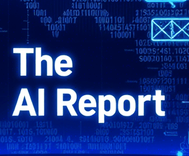Artificial Intelligence Is Draining Water Resources

The AI Report
Daily AI, ML, LLM and agents news
Artificial intelligence is rapidly reshaping our world, but its relentless advancement carries a hidden cost that few consider: an insatiable thirst for water. As Europe ambitious to become a global AI powerhouse, with plans to triple data center capacity within seven years, we face a critical environmental dilemma. This expansion threatens to exacerbate water scarcity, particularly in regions already grappling with chronic water stress, challenging our notions of sustainable technological progress.
The Invisible Thirst of the Digital Age
Data centers, the physical infrastructure supporting our digital lives, are voracious consumers of water. They require enormous quantities to cool their powerful servers, preventing overheating and ensuring continuous operation. This "digital thirst" is prompting serious environmental concerns, especially as tech giants like Amazon, Microsoft, and Meta expand their footprints into areas already prone to drought, such as parts of Spain and Greece. The paradox is stark: while we pursue innovation, we risk depleting a fundamental natural resource.
When Economic Ambition Meets Environmental Reality
The drive to attract technological investment often clashes with local environmental realities. Policy decisions to site these massive facilities in semi-arid regions highlight a disjointed approach, where the immediate economic benefits of job creation often overshadow long-term sustainability concerns. Consider the fierce opposition from farmers in Spain's Aragon region against Amazon's data center plans, fearing a direct impact on their vital water allocations. Similarly, the UK's first "AI Growth Zone" in Culham has raised eyebrows, being situated near the country's newest water reservoir. These examples underscore a growing tension between fostering technological growth and safeguarding essential resources for communities.
Beyond Cooling: A Broader Water Footprint
While server cooling is a significant factor, the full environmental impact of data centers extends much further. Experts reveal that more than half of a data center’s total water footprint occurs off-site. This includes the substantial water needed for energy production, especially in thermal power plants, and the intensive processes involved in semiconductor manufacturing, which forms the very backbone of AI hardware. Understanding this broader ecosystem is crucial for developing truly comprehensive sustainability strategies.
Charting a Sustainable Path Forward
Addressing this challenge requires a multi-faceted approach, balancing innovation with responsible resource management. The European Commission’s EuroHPC initiative, for instance, emphasizes energy efficiency and environmental sustainability, showcasing models like Germany's JUPITER supercomputer, which runs on renewable energy and reuses generated heat. However, the solutions must be more widespread and deeply integrated. Tech companies are actively exploring innovations, from advanced recycling techniques within data centers to leveraging non-potable water sources like desalinated seawater, as seen at Portugal's Start Campus facility, and even pioneering water-free cooling methods, a concept Microsoft is currently testing.
Integrated Policy and Responsible Investment
Moving forward, integrated policy thinking is paramount. Governments and industry leaders must collaborate to prioritize sustainability alongside economic growth. This means incentivizing water-efficient technologies, carefully assessing site locations, and potentially imposing restrictions where water stress is critical, as already demonstrated by the Netherlands and Ireland. The future of AI cannot be built at the expense of our planet’s lifeblood.
The "digital thirst" of artificial intelligence is a growing threat, with one-third of Europe's population already living in areas under severe water stress. As we push the boundaries of technology, we must also re-evaluate our approach to resource consumption. The question is no longer whether AI can change the world, but whether we can develop AI responsibly enough to ensure a sustainable world for all. This requires collective commitment to innovation that respects ecological limits, fostering a future where technological advancement and environmental stewardship go hand in hand.

The AI Report
Author bio: Daily AI, ML, LLM and agents news
